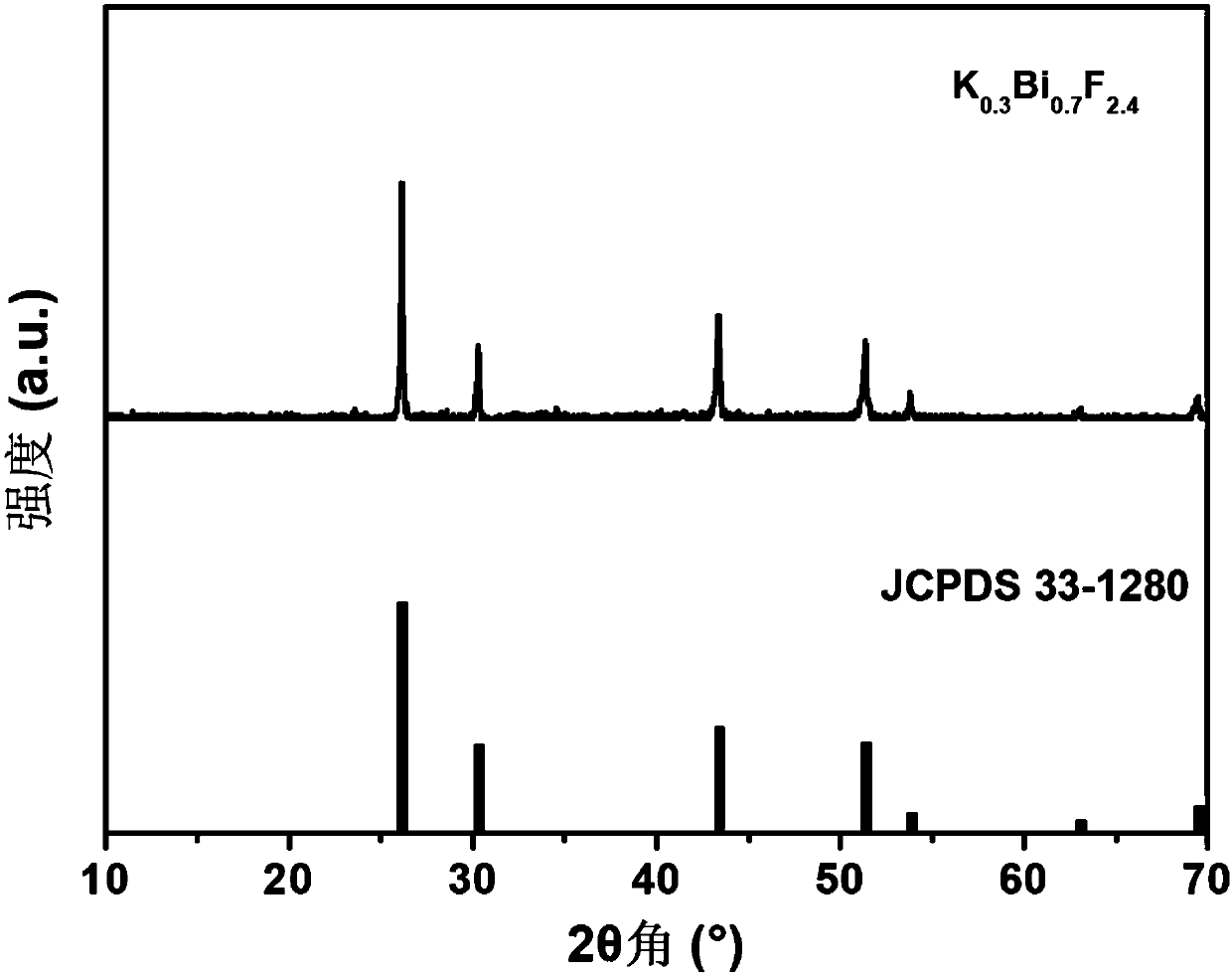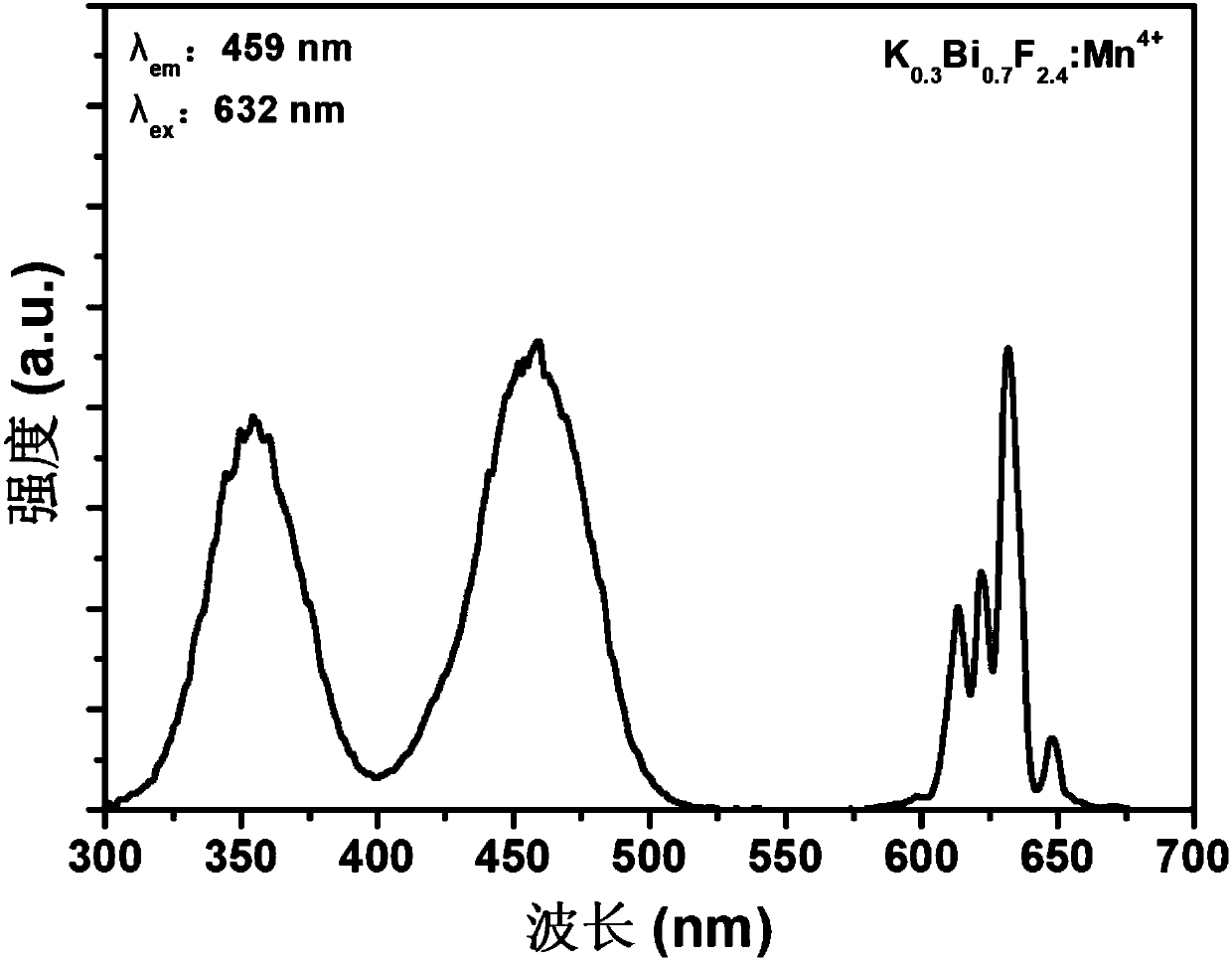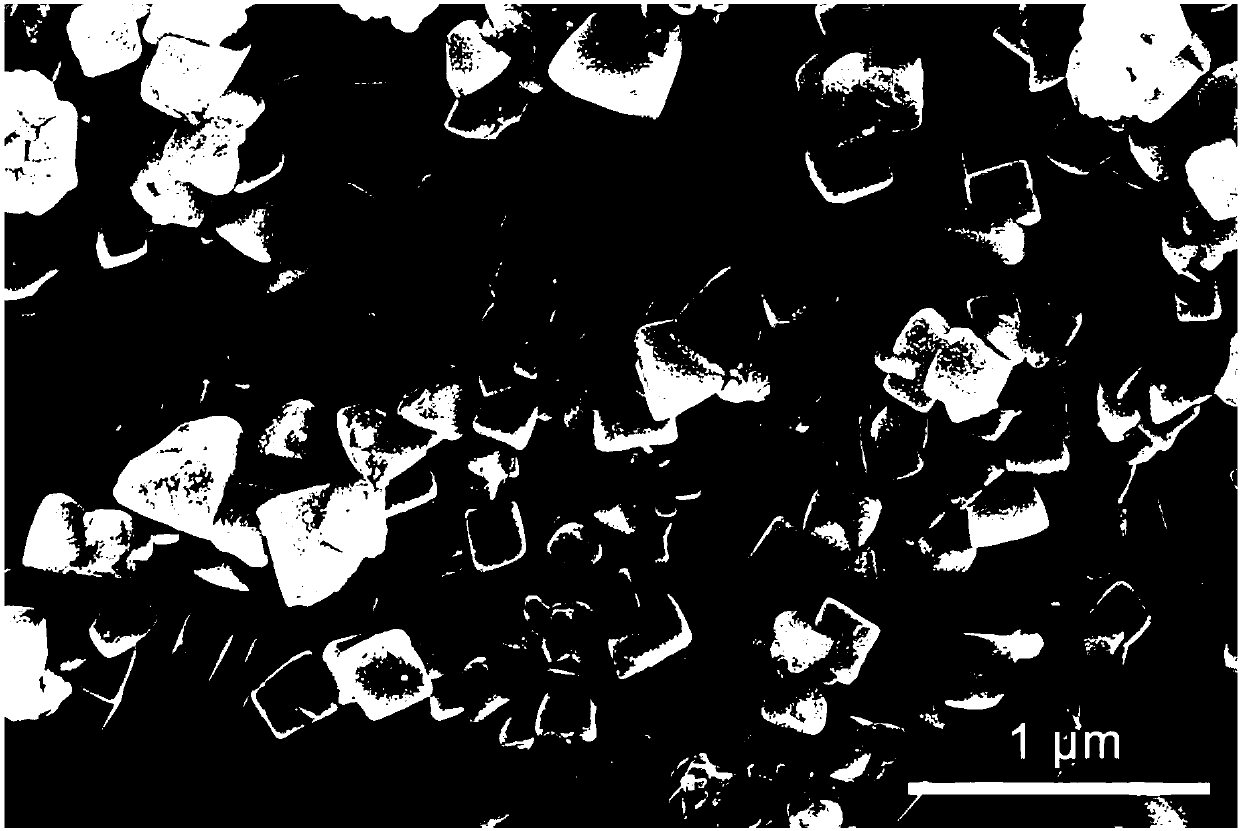Blue-light-excited Mn4<+>-doped fluorine bismuthate red emitting material and preparation method thereof
A technology of fluorobismuth salt and blue light excitation, which is applied in luminescent materials, chemical instruments and methods, sustainable buildings, etc., can solve the problems of lack of red light components, difficulty in meeting requirements, high color temperature of light sources, etc., and is conducive to large-scale industrialization The effect of low production, low cost and uniform particle size distribution
- Summary
- Abstract
- Description
- Claims
- Application Information
AI Technical Summary
Problems solved by technology
Method used
Image
Examples
Embodiment 1
[0039] K 2 MnF 6 preparation of
[0040] Prepare K according to the method described in the document Angew.Chem-Ger.Edit.65,304 (1953) 2 MnF 6 , including the following steps:
[0041] Weigh 10g KHF 2 Dissolve in 50ml of hydrofluoric acid solution with a mass fraction of 49%, add 1g KMnO 4 , stir until the solids are completely dissolved, and at the same time cool the solution to 0-5 °C, then gradually add a hydrogen peroxide solution with a mass fraction of 30%, until the solution turns from purple to yellow, stop the drop immediately, filter, and the obtained The yellow precipitate was washed 3 times with acetone, and then dried at 80 °C for 2 h to obtain K 2 MnF 6 .
Embodiment 2
[0043] K 0.3 Bi 0.7 f 2.4 :Mn 4+ The preparation of the red light material specifically includes the following steps:
[0044] Weigh 2.33g Bi 2 o 3 Add to 20ml 49wt% hydrofluoric acid solution, add 0.12g K 2 MnF 6 And reacted at room temperature for 30 minutes, then added 1.77g KF and continued to stir for 60 minutes, filtered, and the resulting precipitate was washed and dried to obtain Mn 4+ Doped fluorobismuth red light material.
[0045] Prepared sample K 0.3 Bi 0.7 f 2.4 :Mn 4+ The XRD diffraction pattern of the red light material is as follows figure 1 shown by figure 1 It can be seen that the diffraction peak of the sample is consistent with that of the standard card JCPDS 33-1280 (K 0.3 Bi 0.7 f 2.4 ), there is no heterophase diffraction peak, indicating that the synthesized red light material sample is a pure phase.
[0046] Prepared sample K 0.3 Bi 0.7 f 2.4 The room temperature excitation and emission spectra of red light materials are shown in ...
Embodiment 3
[0049] K 0.3 Bi 0.7 f 2.4 :Mn 4+ The preparation of the red light material specifically includes the following steps:
[0050] Weigh 2.33g Bi 2 o 3 with 2.34g KHF 2 Mix and grind evenly, place in a muffle furnace with a temperature of 300°C and bake for 6 hours, add the obtained sample to 10ml 49wt% hydrofluoric acid solution, and then add 0.12g K 2 MnF 6 And reacted at room temperature for 30 minutes, filtered, and the resulting precipitate was washed and dried to obtain K 0.3 Bi 0.7 f 2.4 :Mn 4+ red light material.
[0051] Prepared sample K 0.3 Bi 0.7 f 2.4 :Mn 4+ For the XRD diffraction pattern of red light materials, see figure 1 , the diffraction peak of the sample and the standard card JCPDS 33-1280 (K 0.3 Bi 0.7 f 2.4 ), there is no heterophase diffraction peak, and the synthesized red light material sample is a pure phase.
[0052] Prepared sample K 0.3 Bi 0.7 f 2.4 :Mn 4+ The room temperature excitation spectrum and emission spectrum of red li...
PUM
| Property | Measurement | Unit |
|---|---|---|
| Particle size | aaaaa | aaaaa |
Abstract
Description
Claims
Application Information
 Login to View More
Login to View More - R&D
- Intellectual Property
- Life Sciences
- Materials
- Tech Scout
- Unparalleled Data Quality
- Higher Quality Content
- 60% Fewer Hallucinations
Browse by: Latest US Patents, China's latest patents, Technical Efficacy Thesaurus, Application Domain, Technology Topic, Popular Technical Reports.
© 2025 PatSnap. All rights reserved.Legal|Privacy policy|Modern Slavery Act Transparency Statement|Sitemap|About US| Contact US: help@patsnap.com



